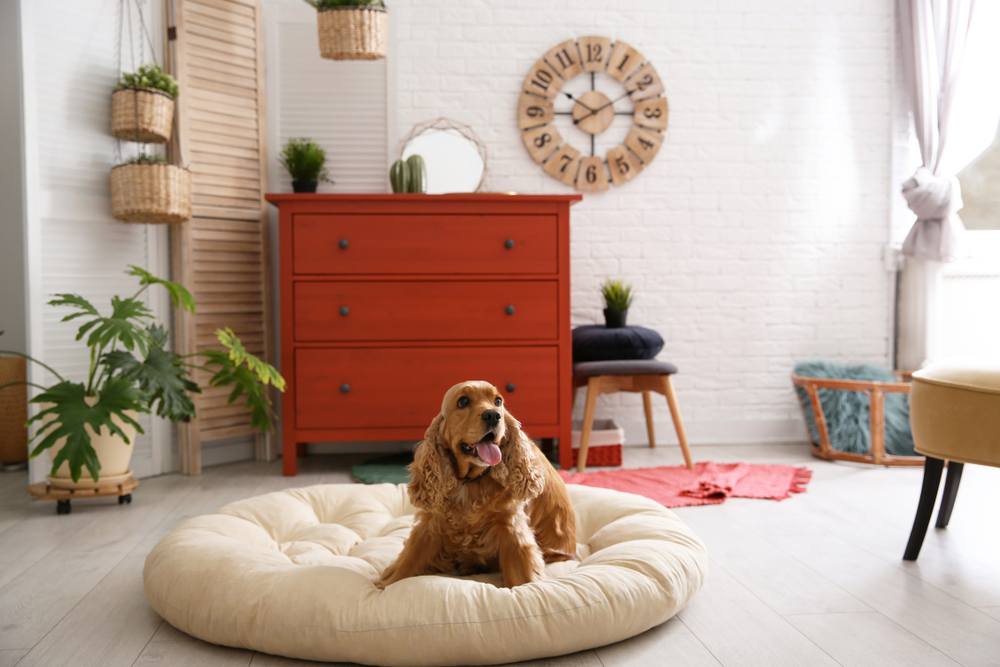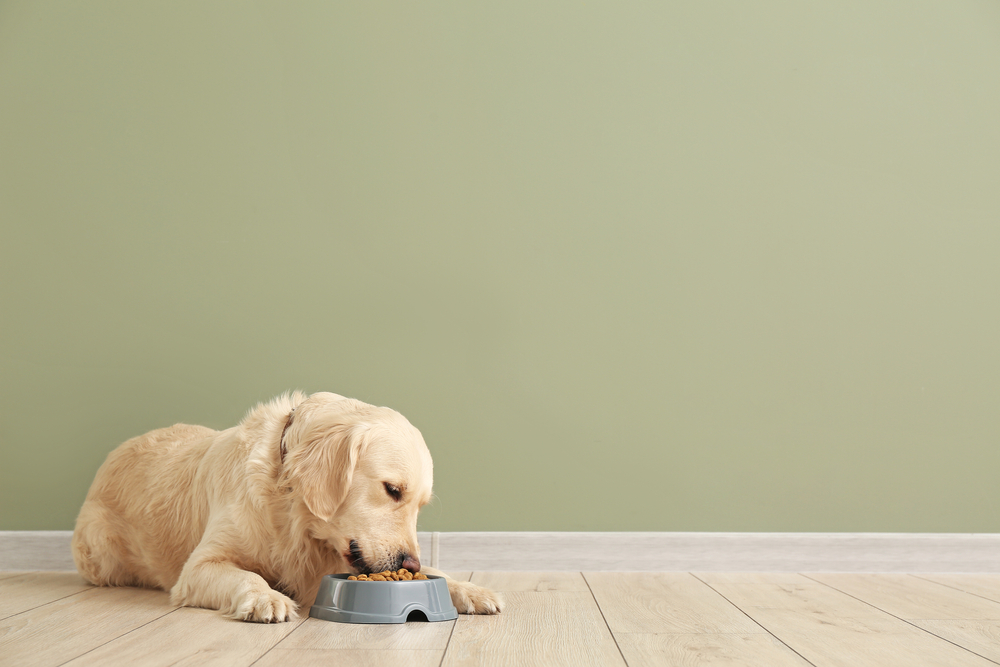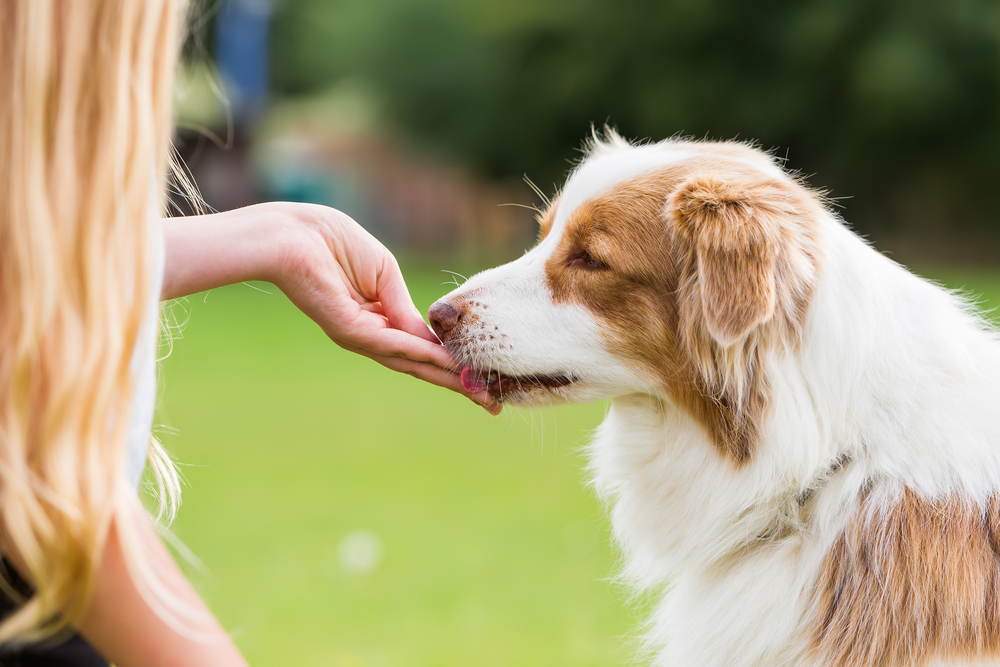First Dog Checklist

Bringing home your first dog is an exciting time! Before welcoming your new fur baby as part of the family, there are a few essential items you’ll need to buy as well as ongoing expenses and check-ups.
We’ve created a checklist to help you prepare your home for your new dog and ensure your new companion is healthy and comfortable from their very first day with you – as well as some ongoing costs you’ll need to budget for.

Dog bed
Like us, dogs appreciate comfort and love to sleep (particularly if your new dog is a puppy). Depending on their age, dogs sleep anywhere from 12 to 18 hours a day, which is why it’s important to find a comfortable, appropriately sized dog bed for your new canine friend.
Sure, your dog might at times snuggle next to you, but it’s also important that dogs have a bed of their own. This also means that when you’re not around, they have their own dedicated place to relax and chill out.
Choosing the right dog bed can be overwhelming, and the best dog beds are those that are comfortable and support your dog’s entire body. Of course, price is also a factor. When looking for dog beds in Australia, there is a huge range available (you might even find a bargain in a dog bed sale!). Whether you are after a large dog bed for your new mate, a raised dog bed (providing firm, even support for your dog), even a cheap dog bed (maybe your new BFF won’t use its bed or will prefer to eat it!) the best dog beds are the ones your dog is comfortable in, supports its body, and your dog uses!
Older dogs can develop issues such as joint problems, arthritis, and hip dysplasia, so a supportive, comfortable dog bed that is the right size for your dog is particularly crucial to help provide pain relief and promote comfort – both for naps during the day and solid periods of sleep at night
If your new dog is a puppy, just like babies and toddlers, puppies like to feel secure, and a cosy bed that cushions their body encourages them to get to sleep and stay asleep.
Dogs also appreciate and need their own place to relax. Choose a dog bed that is an appropriate size for your dog. Larger dogs need a large dog bed, and even smaller dogs need to be able to stretch out in their new bed.
It might also pay to buy a dog bed that is easy to clean, such as one with a removable, washable cover. Regularly washing your dog bed will also minimise germs and dog hair, as well as doggy aromas!

Food and water bowls
You will need a separate food and water bowl for your new dog. You can choose two separate bowls or a double bowl. The size of the bowl you choose may depend on the size of your dog and how much it eats. Some dog
Stainless steel bowls – sturdy, durable, and easy to clean (including in the dishwasher), stainless steel bowls are a good long-term choice. Try a stainless steel bowl with a rubber base that prevents the bowl from sliding around.
Glass, ceramic or stoneware bowls – can offer good stability and prevent your dog from flipping their bowl over (particularly useful for puppies!)
Plastic bowls – are inexpensive and easy to find but may not be as durable and sturdy. If your new dog is a puppy, they may be tempted to chew on a plastic bowl!
Specialty bowls are also widely available such as anti-gulp, slow-feeding bowls, and elevated feeding bowls.

Collar and Lead
Ensure your new dog has a collar and ID tag with your dog’s name, your name, your phone number, and your address. Flat collars with clip or button fasteners are great at keeping their shape and are easy to slip on and off if needed. A quick tip for the right collar length/tightness – you should be able to slide two fingers between the collar and your dog. Remember to adjust the collar regularly if your new dog is a growing puppy!
Harnesses are an option for dogs that like to pull and smaller dog breeds (front-attaching harnesses are best to prevent pulling).
Dog leads are important when walking, to control your dog, and to prevent it from chasing or running away when out and about. Leads are available in a wide range of lengths and materials. Be wary of retractable leads which may not give you enough control and may encourage your dog to pull.

Food & Treats
There are a huge range of dog treats and foods available, including dry food, wet food, bones, treats, and home-cooked meals! If buying dog food from your supermarket or vet, it’s important to feed your dog life-stage food (e.g. appropriate for puppies or older dogs etc.) and even breed-specific dog food where possible.
There are many diet options for dogs – make sure you choose according to your dog’s tastes, size, age, weight, health, etc. and any recommendations from your vet.
It’s also important to be aware of food types that are not safe for dogs to consume and need to be avoided. These include cooked bones, onion, chocolate, garlic, and citrus. Salty foods, fatty foods, raw yeast dough, and milk (if your dog reacts badly to it) should also all be avoided.
Additional items and ongoing responsibilities as a dog owner include:
• Grooming tools (such as comb/brush and nail clippers)
• Toys (including rope toys, rubber toys and balls, and food-dispensing toys)
• Toilet training items, such as pee pads and potty boxes, if needed
• Dog shampoo (human shampoo is not appropriate for dogs)
• Worming treatments
• Flea treatments
• Vet checks and vaccinations
• Kennel/shelter
• Dog-proofing areas of your home and yard, if necessary
Bringing home your first dog is both exciting and rewarding, and preparing early is key to ensuring you and your new family member enjoy and benefit from the experience!